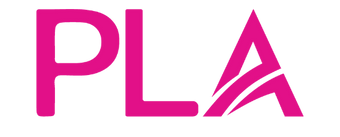What is a Reverse Infill?
Hi, Lash Queens and Kings! When you think of a lash fill, you probably think of the typical steps we learn early on in training - remove the outgrown lashes after cleansing and simply start applying new eyelash extensions to the bare lashes.
But have you heard of a reverse infill? This is a unique method and we’re here today to tell you all about it!
What is an infill?
Let’s start with the basics: An infill, also called a lash fill, is when the lash artist removes the outgrown lashes and replaces them with a new extension.
The artist replenishes the lashes that have shed out, filling in any spaces with new extensions so the lash set is full and fluffy again!
What is a reverse infill?
Reverse infills are a unique approach to lash fills. With a reverse infill, you apply the eyelash extensions to all of the bare natural lashes first.
After that, you go back through your set and pop off the outgrown or lifted extensions. Lastly, you will comb back through and apply new extensions to the remaining lashes. Below are the steps to complete a reverse infill plus a video demo!
Reverse Infill Steps
- Begin as usual. First, wash the lashes and then apply your eyepads and tape. Don’t forget to prime!
- Give the lashes a thorough brush!
- Start applying an eyelash extension to any natural lash that is empty.
*Ignore the lashes you’ll be removing, such as ones lifted or outgrown. - Once there are no more extensions to be placed, start working from corner to corner removing the lifted or outgrown eyelash extensions.
- Lastly, work corner to corner again, filling in the now exposed natural lashes.
See our video on how to do a reverse infill.
Why are reverse infills helpful?
This style of a lash fill is very helpful for the following reasons:
- A lot of artists feel they complete fills faster with this method because it prevents them from over removing the set.
- If the lash artist or client has an emergency during the appointment, they are not left with an incomplete-looking set due to the approach of this fill style.
- This method also helps ensure an even set. Once you have filled in all the natural lashes that did not have an extension, you will have a great visual of the lashes that need to be removed that don’t match your mapping.
How often are lash fills needed?
A lash fill, whether it be a reverse infill or not, is recommended every 2 to 3 weeks.
Eyelash extensions grow out with our natural lashes during that time, so even with great retention, lashes will still get long, or fall out, and need to be replaced with a fresh extension at the base of the natural lash.
If a client waits too long, the lashes can be too grown out and a new set would be required, or the lash extension can begin to weigh down the natural lash as it grows out and becomes heavy.
To keep natural lashes healthy, even with great retention, getting a fill at two or three weeks is highly recommended. If the extension is weighing down the natural lash due to growth, this can cause stress on the natural hair follicle.

Give the Reverse Infill method a try and let us know how it goes for you! This method can save time for your lash fills and you will always be left with a beautiful set of fluffy lashes.
Don't forget to grab all your lash technician supplies while you're here - we're the leading supplier of eyelash adhesive and remover, lash tweezers, promade fans, and more!
Happy lashing, Kings and Queens!

